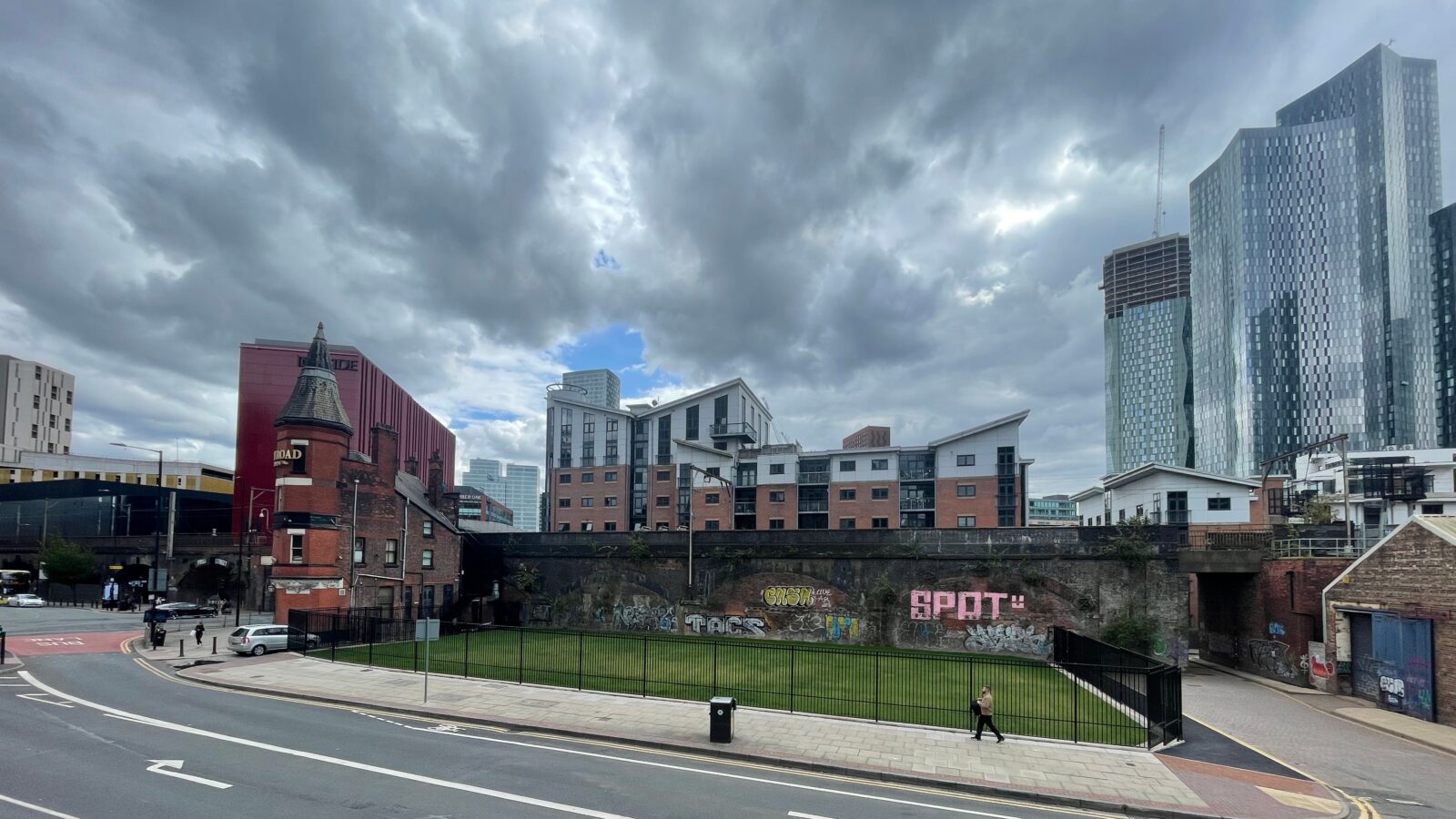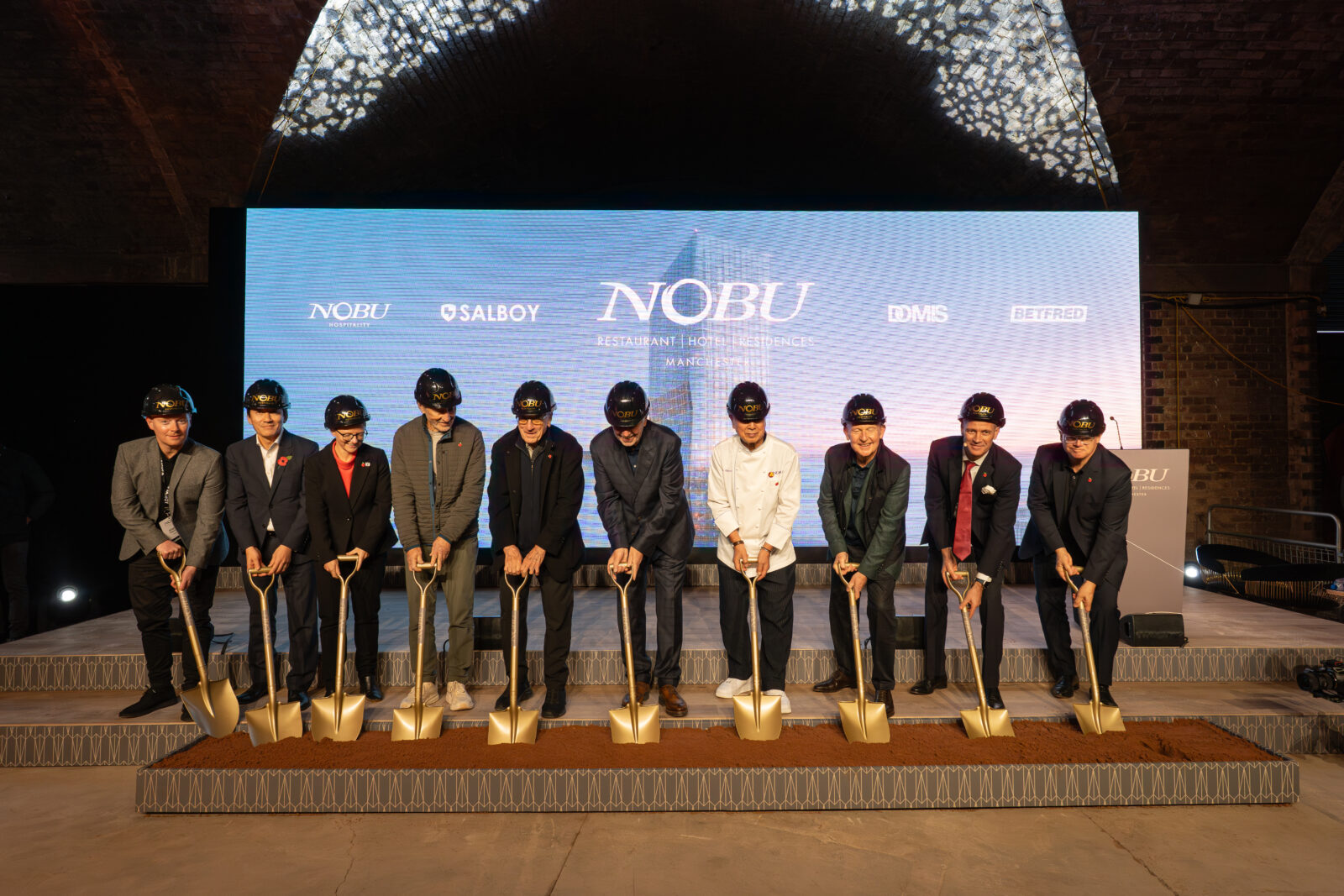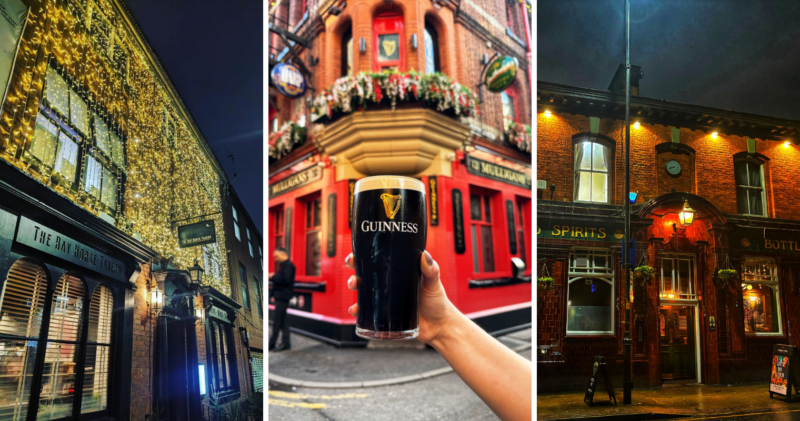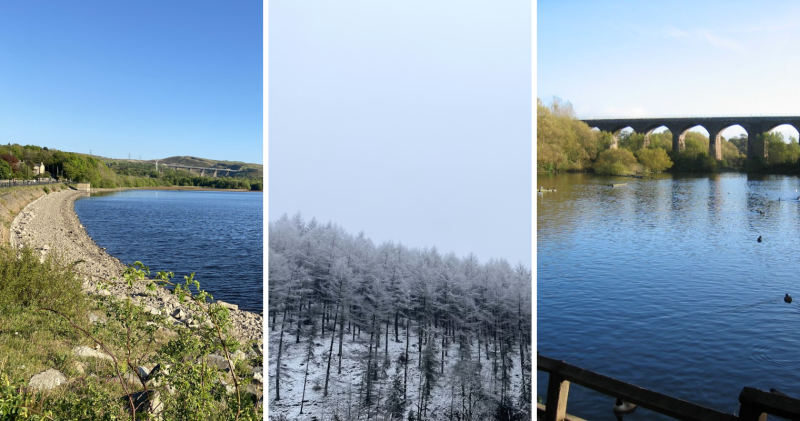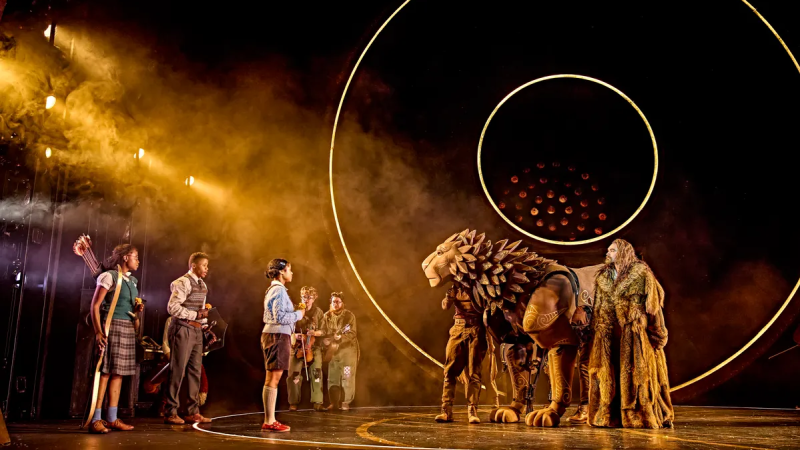Feature
The latest on Manchester’s New York-style ‘sky park’ on Castlefield Viaduct
Plans to transform Castlefield Viaduct into a ‘sky park’ similar to the High Line in New York are ploughing ahead.
The National Trust’s ambitious vision to create an urban green space on this heritage landmark is well underway.
More than 3000 plants are being added to the Victorian viaduct, which looms over the southern side of the city centre.
It’s now set to open as early as next month, turning the 330m structure into a park in the sky.

The Castlefield Viaduct dates back to 1892 and was built by Heenan and Froude, the same engineers who worked on Blackpool Tower.
But the site closed in the late 1960s, and until recently the Grade II-listed structure had been left derelict.
Now gearing up to reopen as a sky park, soon visitors will walk along the viaduct surrounded by native plants, shrubs and trees, with a ‘show garden’ at the end.

The experience will also celebrate the industrial heritage of Castlefild, from the planters – inspired by the industrial architecture of the viaduct – to the section of it that will be left untouched, showing how nature has tried to reclaim this space of its own accord.
Some of the plants have been planted in a diamond pattern, mirroring the diamond shape of the viaduct’s steelwork.
A canopy is also being created using 600 half-hardy annual climbers, hops and clematis which will tumble down.

Castlefield Viaduct progress. Credit: National Trust Images, Annapurna Mellor 
Castlefield Viaduct progress. Credit: National Trust Images, Annapurna Mellor
Four sections of the viaduct have been handed to partner organisations so that they can create their own gardens.
These include the Science and Industry Museum (who have recreated the steam from the old locomotives with fluffy white plants, and used blue flowers to symbolise waterways), Urban Wilderness with charity 42nd Street (they’ve created a ‘garden of possibilities’ focused on improving mental health), and City of Trees (‘Past, Present and Future’ is the inspiration for theirs).
Castlefield Forum also have a section with landscape architects BDP, choosing plants that mirror the distinct features of Castlefield in both colour and scale.
These changes are, at present, temporary.

The National Trust has created the park space to gain the public’s opinion on what the long-term future of the viaduct could be.
When the first phase of the £1.8m pilot opens next month, 100 people a day will be able to visit.
Entry onto the structure will be free, but a booking system will be in place to help manage numbers. As part of the experience, visitors will be able to join a guided walk on the viaduct.
Pamela Smith, senior national consultant for Gardens and Parklands at the National Trust said: “We’ve reached an exciting stage in the project to transform Castlefield Viaduct into a green space for the people of Manchester.
Read more: You can stay overnight in a replica of Hagrid’s Hut from Harry Potter
“Creating a garden on an industrial heritage structure such as this is untested territory for us and we’re intrigued to see how the plant life will take to its new surroundings.
“In addition to greening up a heritage structure, we’re celebrating Manchester’s history adding the county flower, cotton grass, to the viaduct as well as fern species once collected by Manchester suffragist and botanist, Lydia Becker.”
Amy Watson, Castlefield gardener at the National Trust said: “Castlefield Viaduct is unlike any other garden in the National Trust’s care and we’ll be keeping a close eye on the garden to see how it gets on over the next twelve months.

“I’ll be working with a team of dedicated volunteers and apprentices to plant bulbs on a regular basis and adding to the planting to make sure there’s plenty to see throughout the year. We’ll also be working closely with our partners to see how their gardens are responding to their unique surroundings.”
Sophie Wardell, urban places programme manager at the National Trust said: “So much hard work has gone into getting the viaduct to this point and we couldn’t have got this far without the support of our partners and those who have helped make this happen for Manchester.
“A little over 12 months ago we’d only just shared the artist illustrations of what the viaduct could look like, and now it’s becoming a reality. This first year is an experiment for us to see what people want Castlefield Viaduct to be in the future and we’re excited to hear what ideas they have.”
To find out more about Castlefield Viaduct, visit nationaltrust.org.uk/castlefield-viaduct.
Featured image: National Trust Images Annapurna Mellor




